I have done a bit of natural dyeing in the past, and I have a beginner’s natural dye book, so I am always on the lookout for plants to dye with. This fall I noticed that my neighbor across the street has a Japanese maple. According to my book, The Handbook of Natural Plant Dyes, red Japanese maple leaves can give a salmon pink or grey with iron mordant. The leaves are only red in the fall, so there is a narrow window for collecting them, so I thought it was quite fortuitous that I had one across the street.
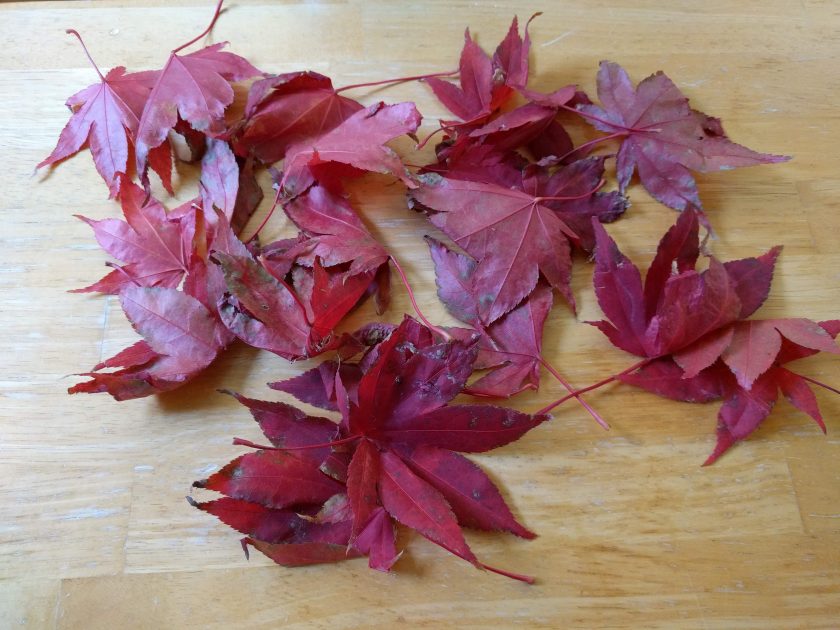
After asking permission from my neighbor (who I’m sure thought I was a bit strange!), I collected a few pounds of leaves for dyeing. As I was researching more about dyeing with the leaves, I stumbled across a technique called ecoprinting, which uses plants to create an impression on paper or fabric. I loved the effects, so I had to try it out!
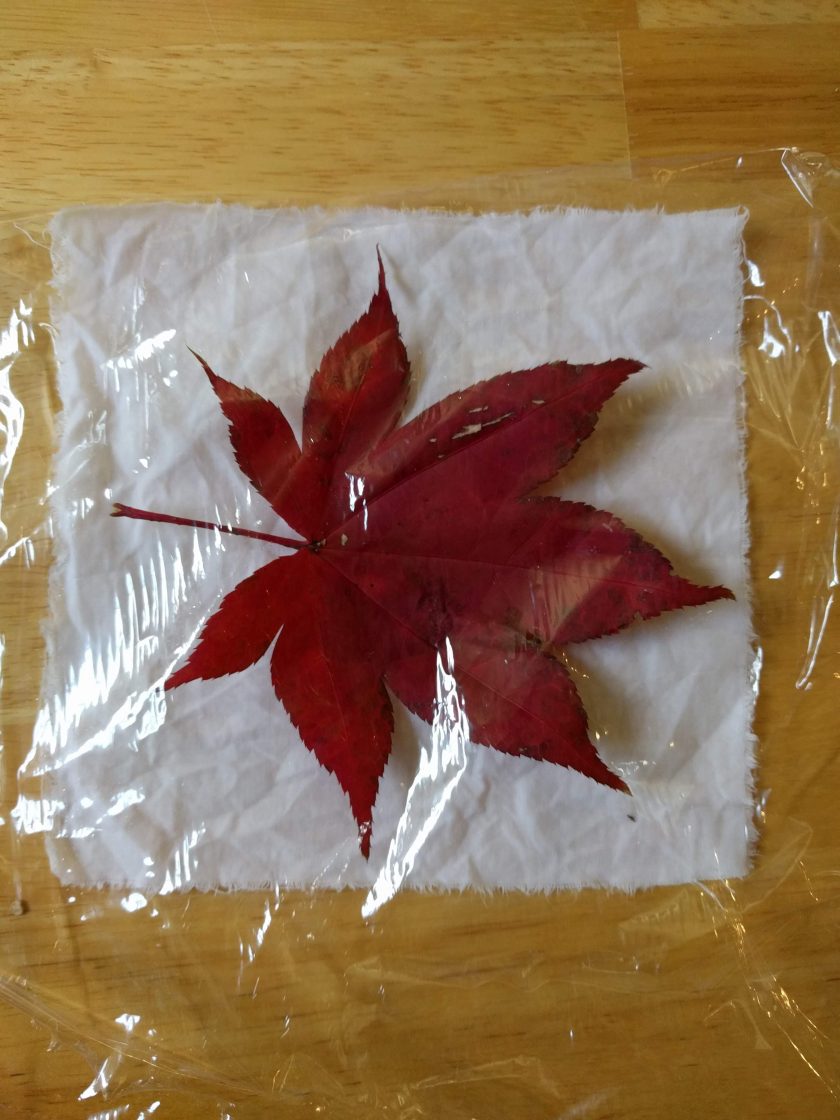
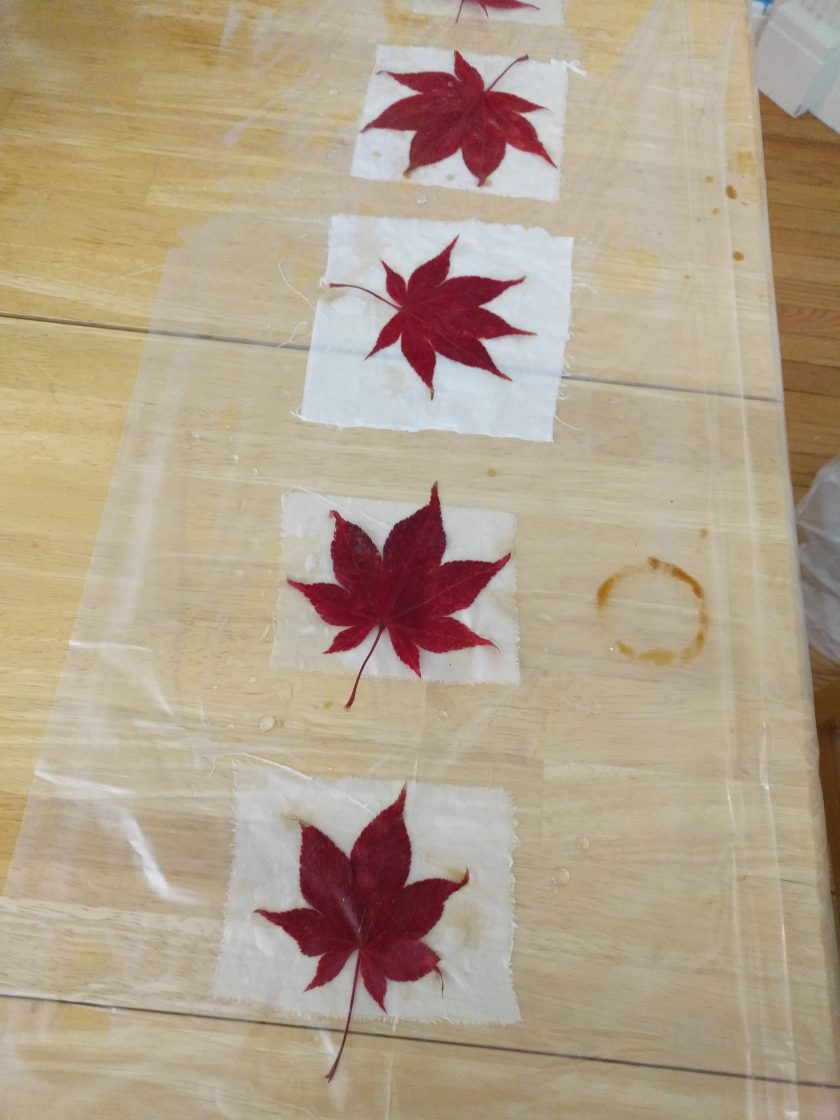
The basic process of eco printing is that the leaves or flowers are placed on the fabric and rolled up tightly. The bundle is then steamed or boiled for a couple hours to transfer the color to the fabric.
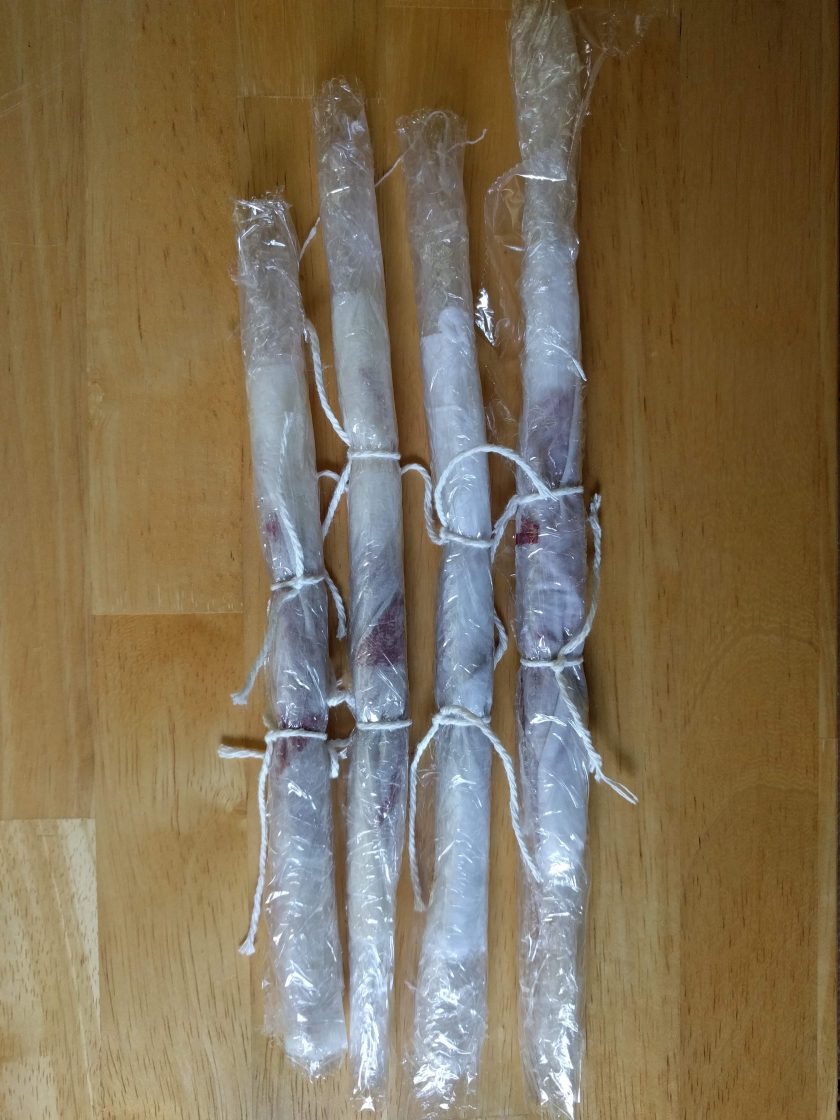
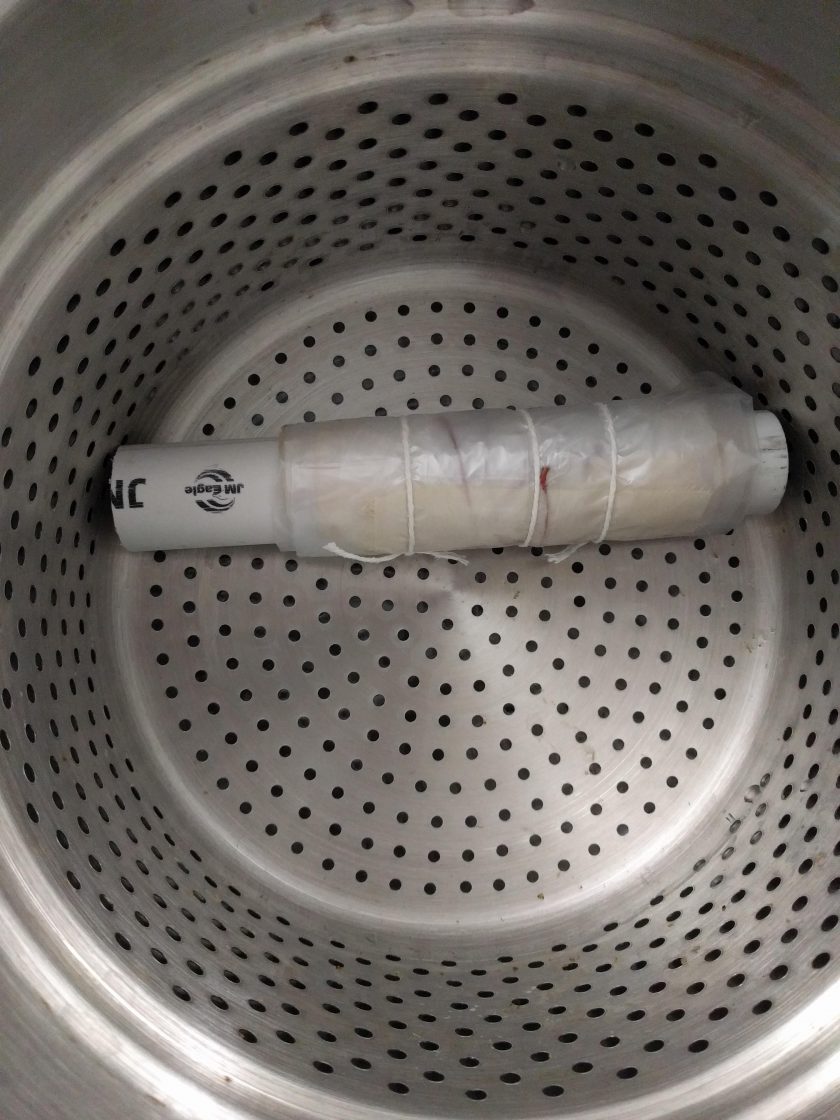
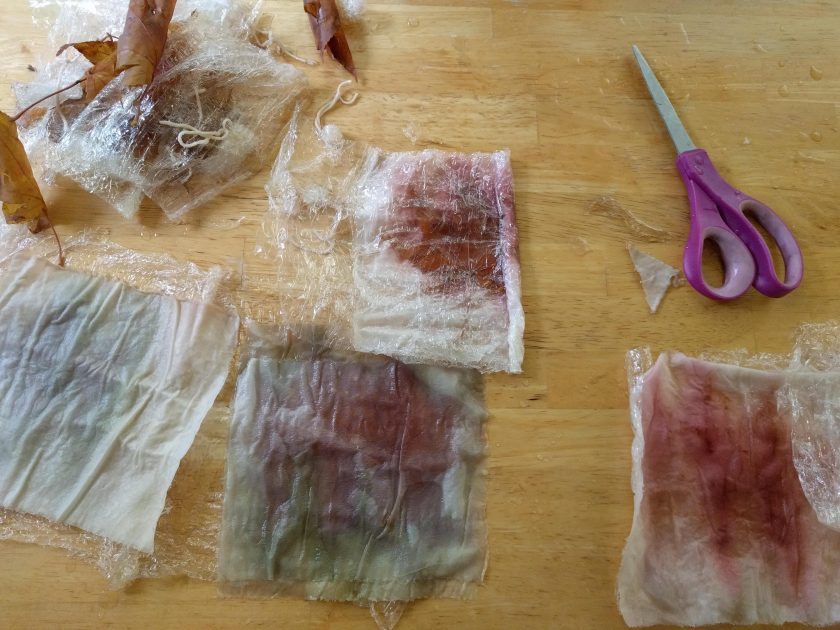
First, I tested the effects of different mordants on silk and cotton. The squares were either not mordanted or pre-mordanted with alum. I have a solution of iron (rusty nail+vinegar+water) that I tested as a post-mordant, either alone, or in addition to the alum pre-mordant. Cotton would normally be mordanted differently than a protein fiber like silk, but I wanted to simplify the process and the tannins in the leaves should help to act as a mordant (cotton is commonly mordanted with alum, then tannin, then more alum).
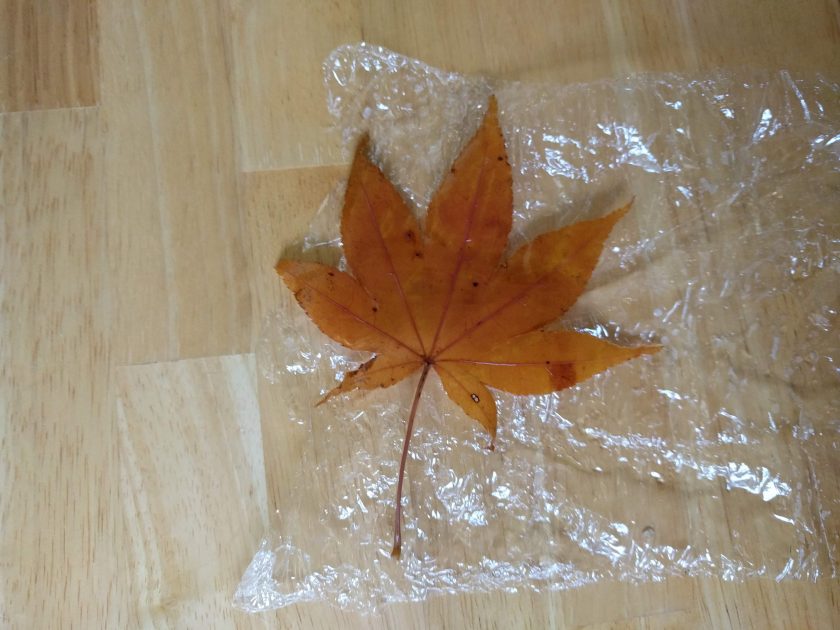
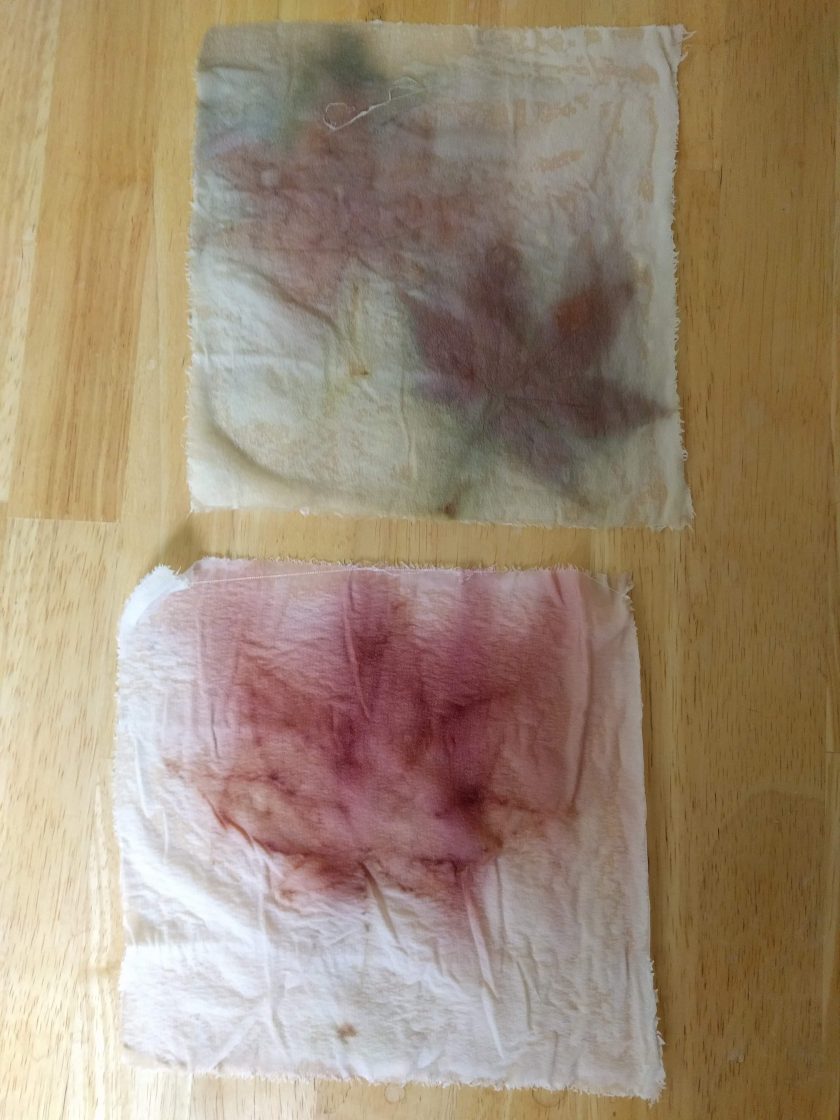
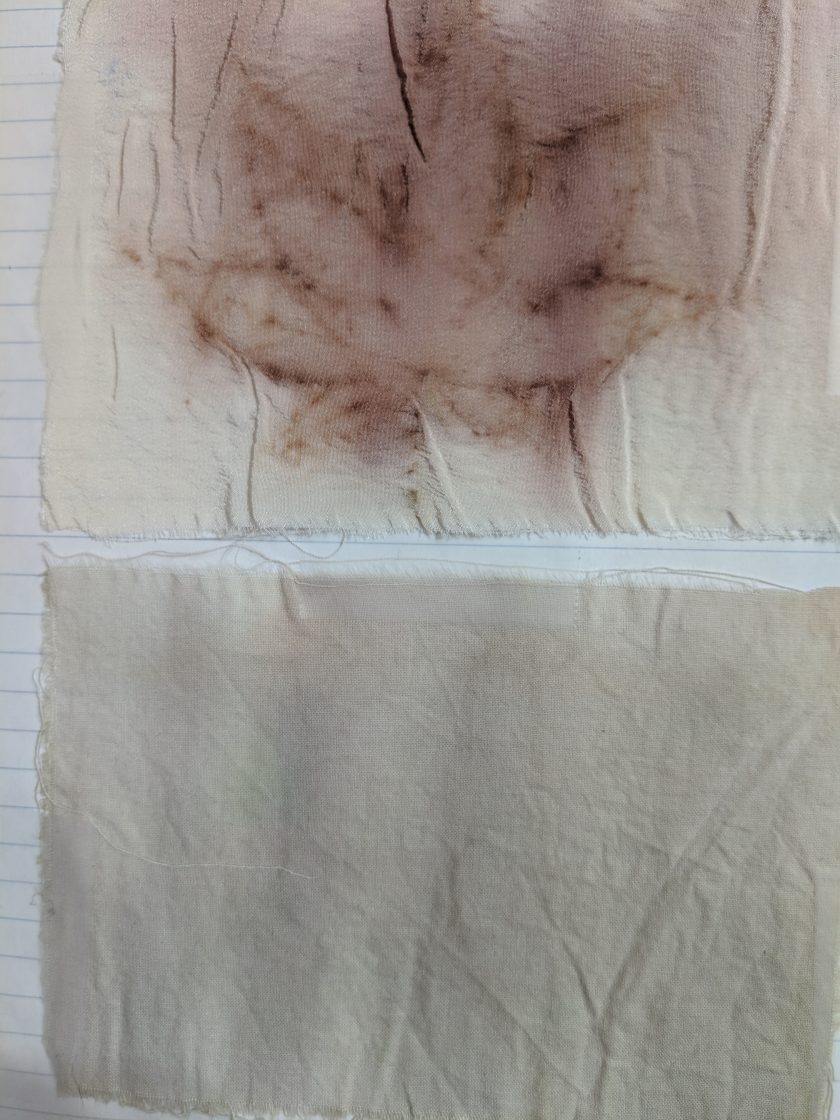
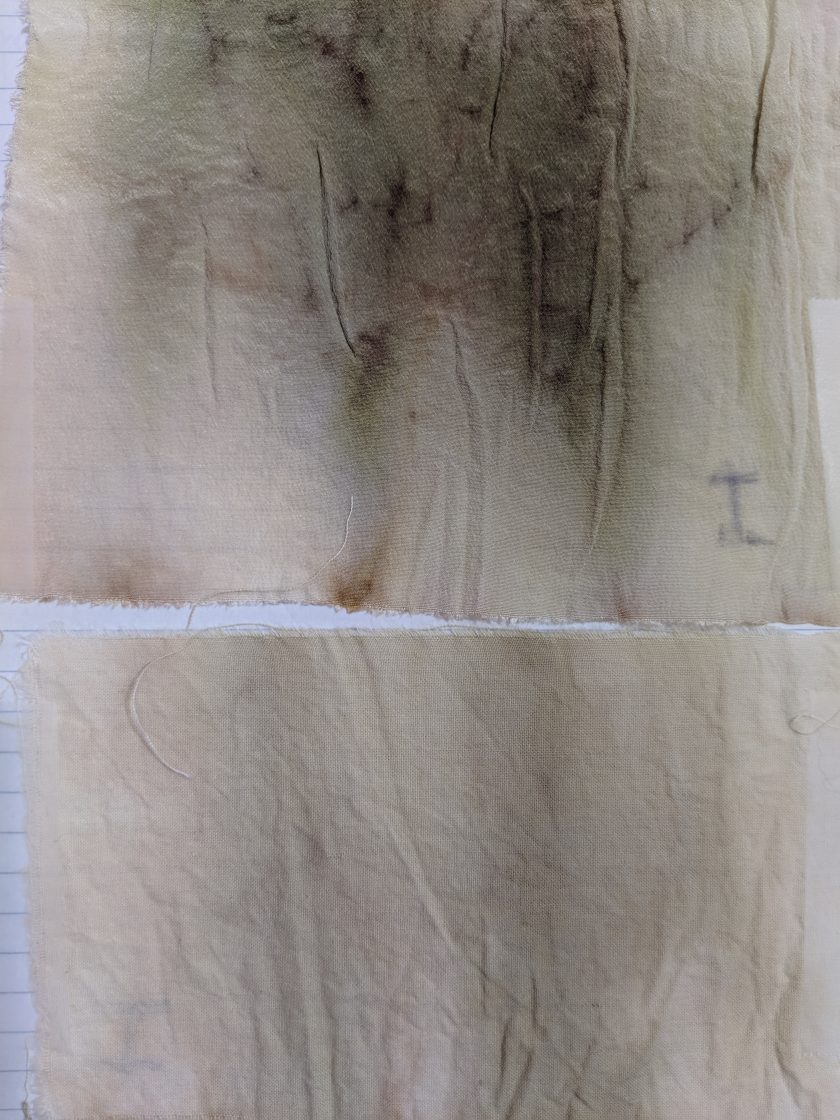
My first experiment told me that silk worked way better than cotton (not a surprise), and that I really needed something to wrap my fabric around, rather than just rolling it on itself. For my next experiment, I wanted to test iron as a pre-mordant and co-mordant (for this I dipped the leaves in my iron solution) rather than as an after mordant. I also got a piece of PCV pipe to wrap my fabric around. Additionally, I steamed rather than boiled my bundles, as I thought that might help to create a clear impression.
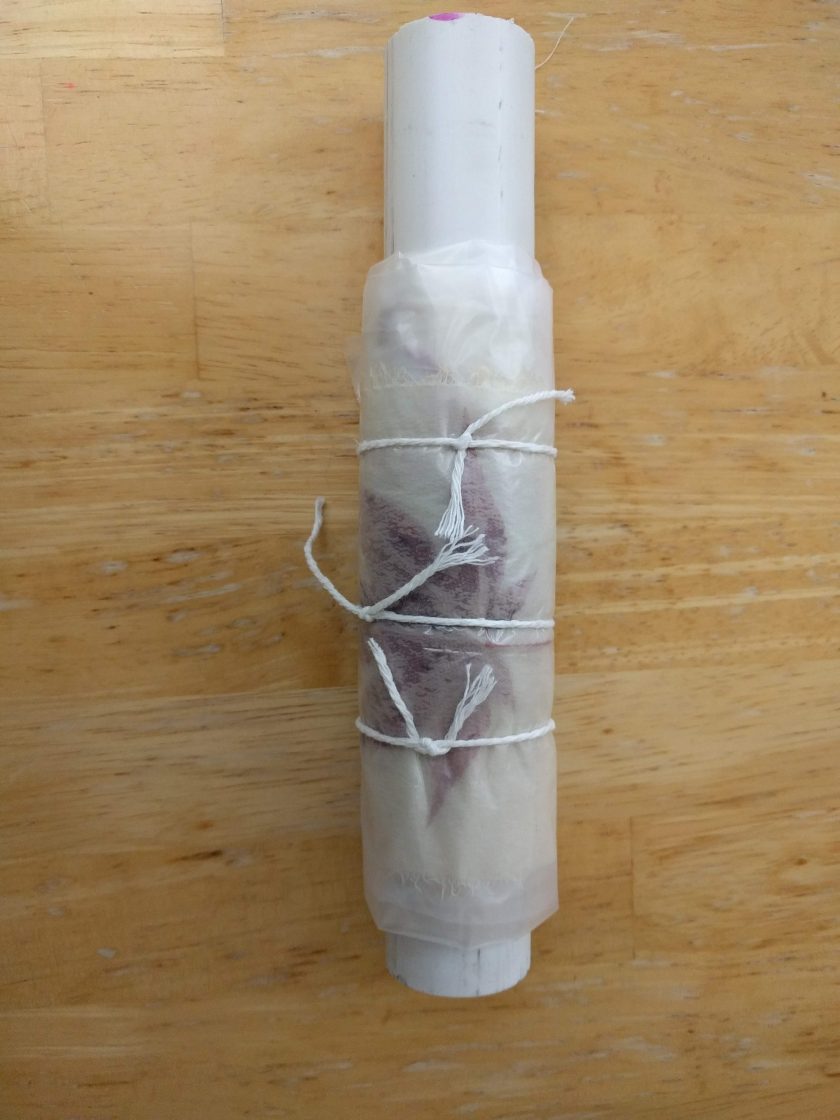
I was quite happy with my second results, at least on the silk. The only improvement I wanted was to wrap the whole length in string rather than tying in only a few places. For the cotton, I was almost ready to give up, but I read that cotton needs really thorough scouring before dyeing. For my third experiment, I added some Dharma textile detergent to a pot with the cotton and boiled it for an hour.
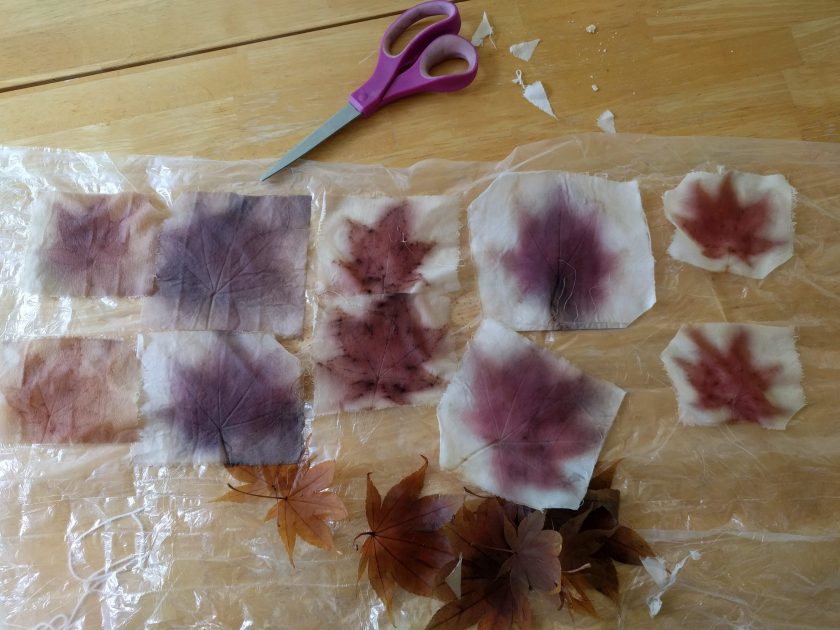

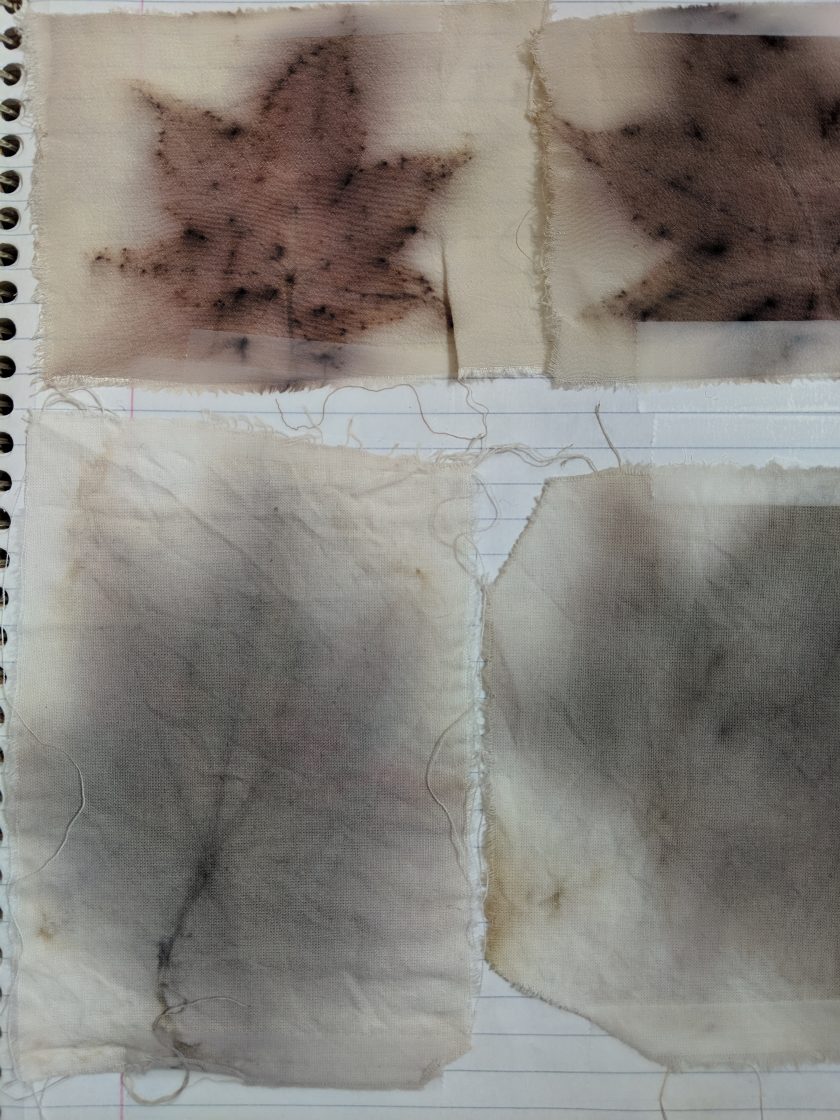
This time, I wanted to try different leaves. I knew that anything that is high in tannins, when combined with a iron mordant, will usually give dark colors. Oak was a good candidate for this. I also tried ginko leaves, solely for the cool shape. I had no idea if they were high in tannins or would work at all. In the same pot, I also did a silk scarf, using the Japanese maple leaves and some bits of onion skin.


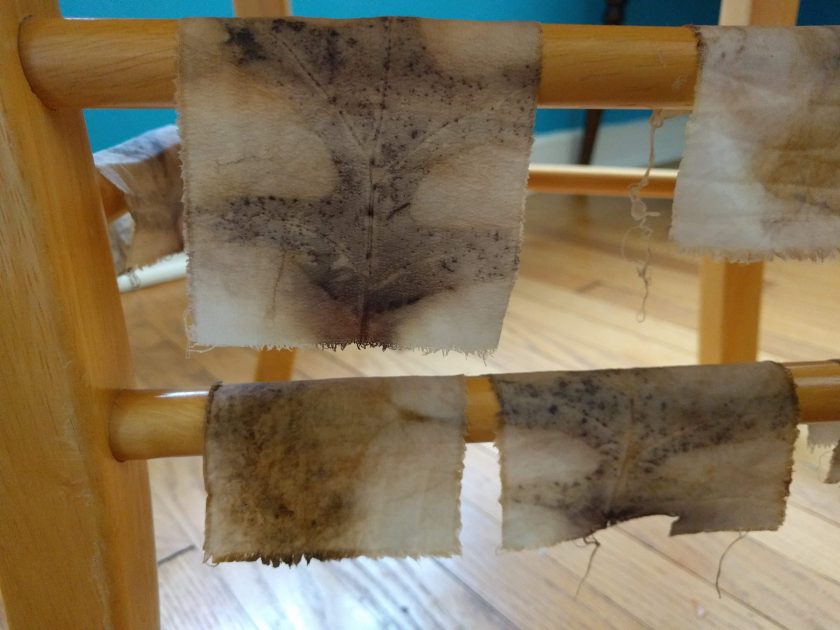
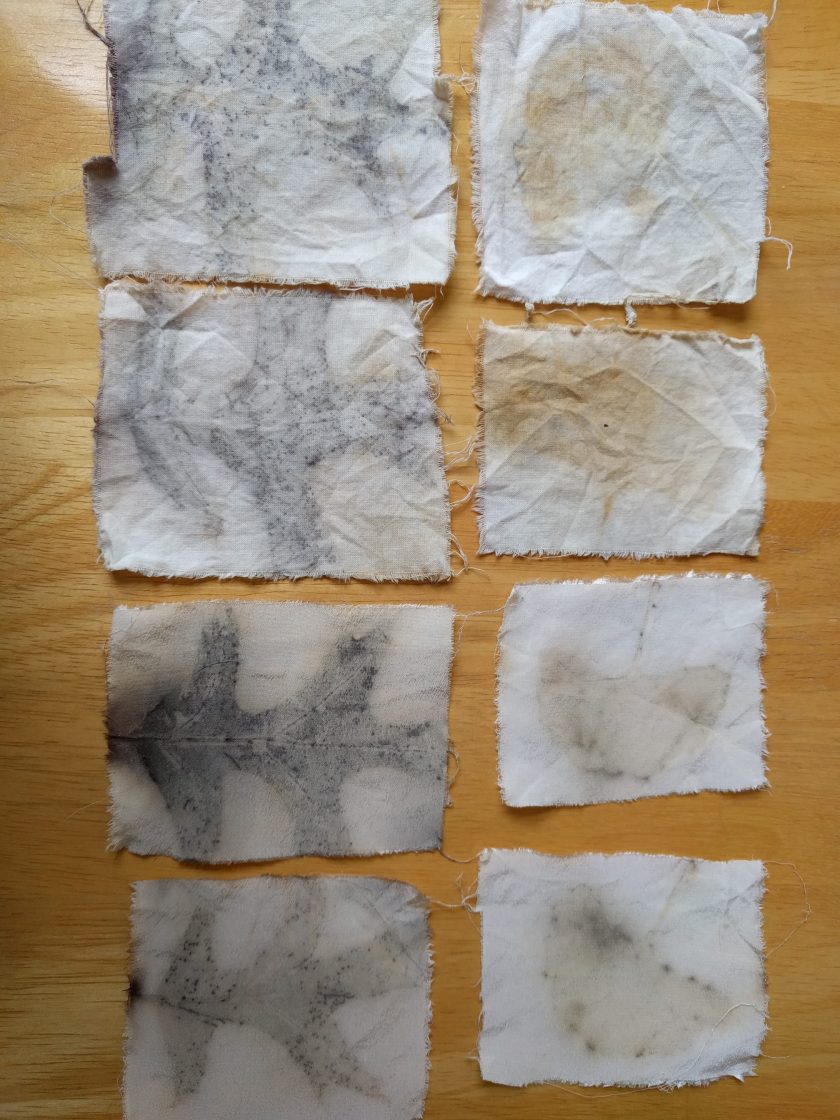
I learned that cotton really does need to be scoured, but at least I finally got a good result on the cotton. I love the oak leaves, but the ginko looks like it does not have much tannin. It will probably not work for ecoprinting, but I may be able to use the leaves as a resist to get the cool shape.
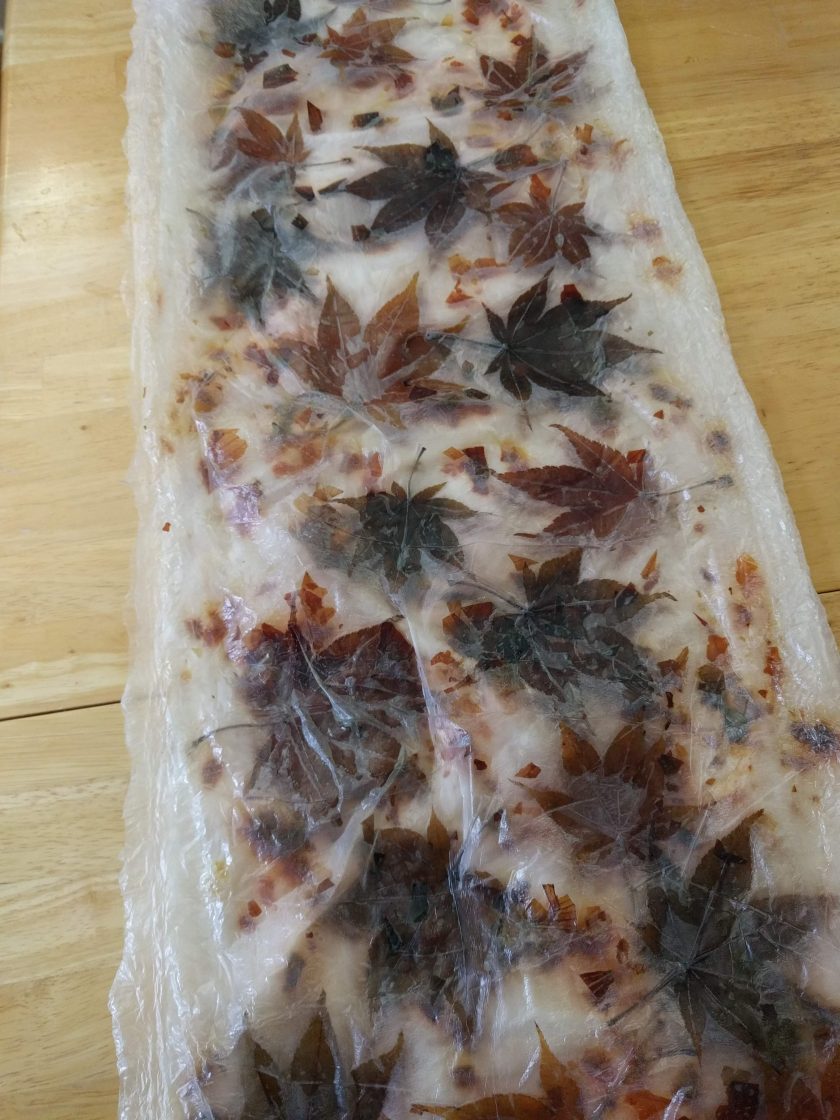
I am happy with how the scarf turned out, but I am not sure I am in love with the onion skin. I thought having some yellow would be good, but I think the background detracts from the leaves.
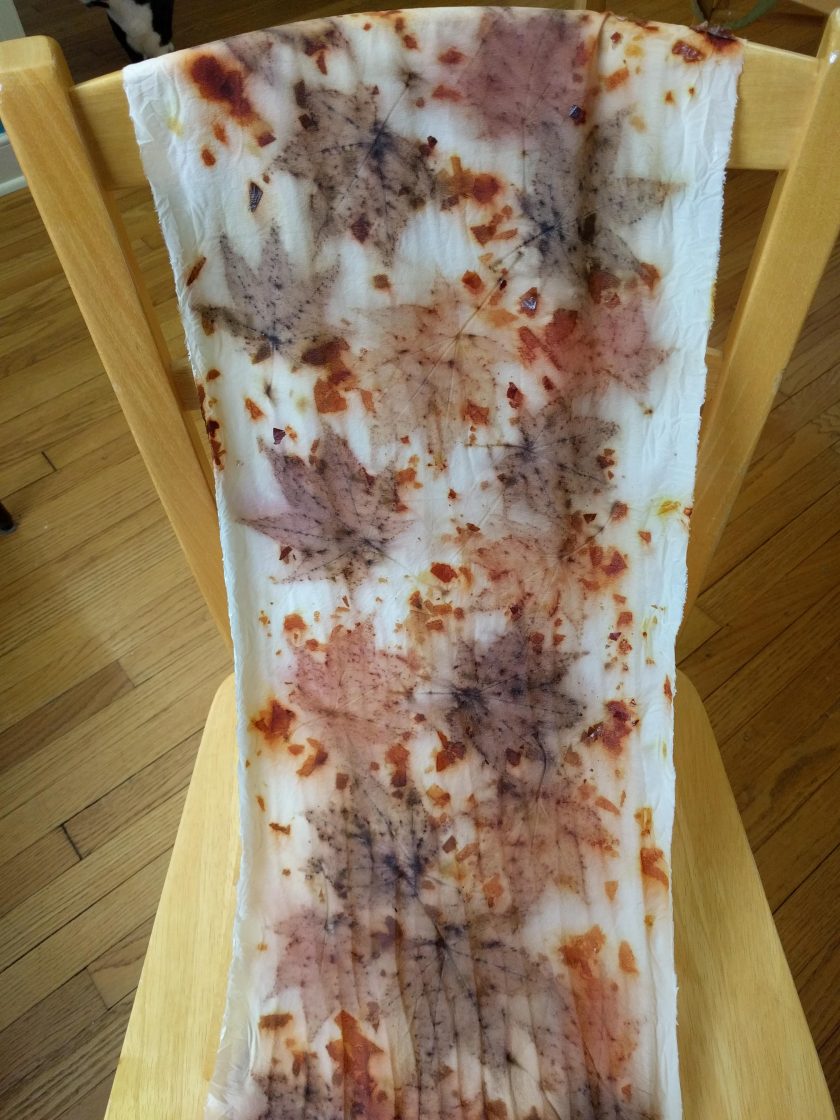
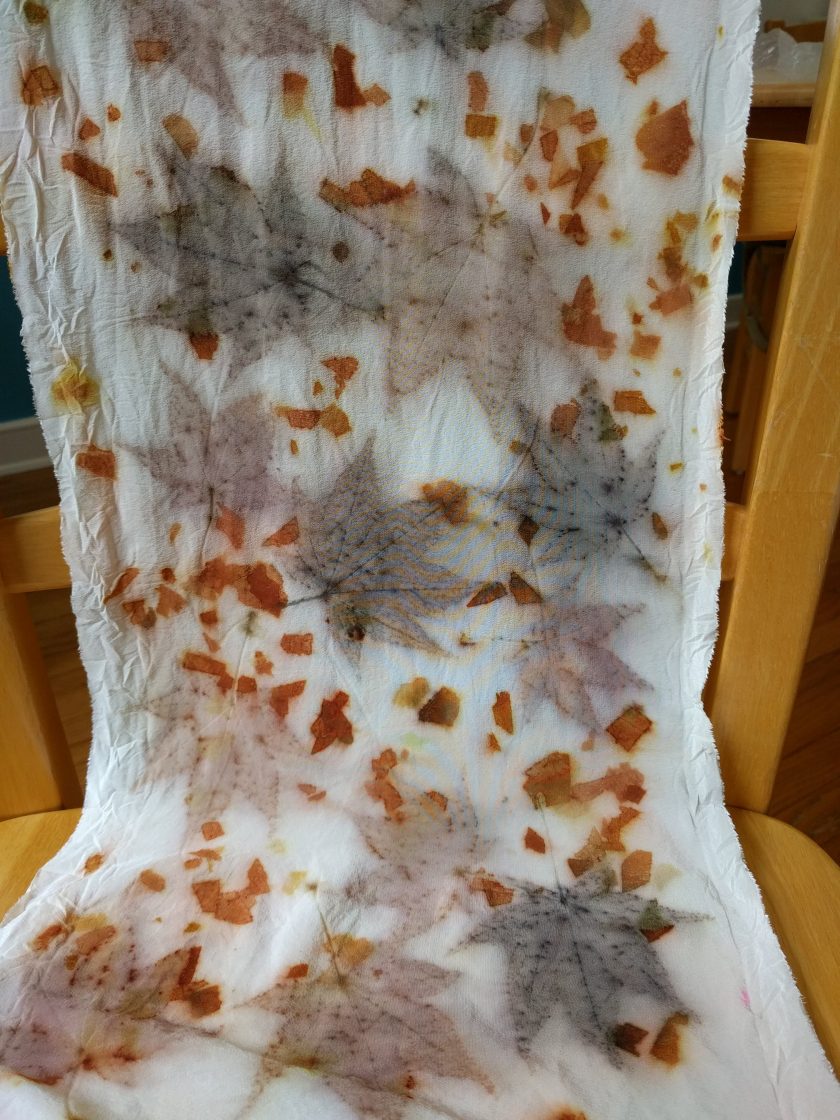
Overall, I think ecoprinting is really fun and I love the results. Too bad all the trees just lost their leaves! I will definitely be doing more in the future.
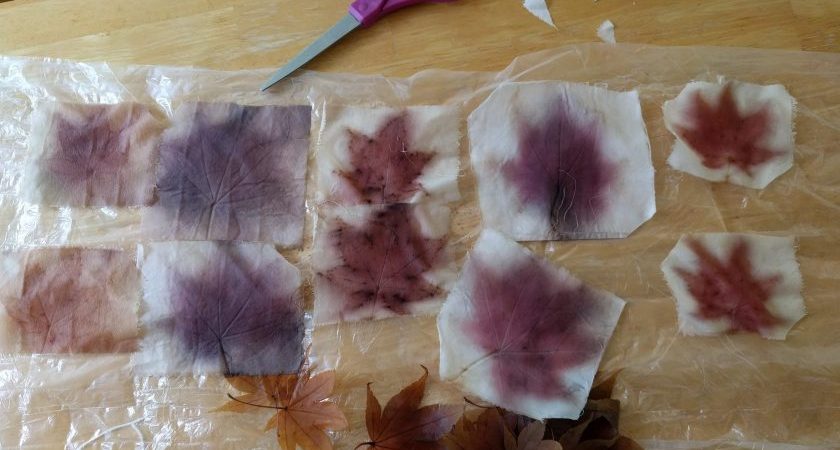
Since your Dec 2018 experiments, have you tried added : powdered tannin or your iron/vinegar solution to the bathwater?
Or have you tried using copper plumbing pieces in your dye bath? Tomorrow, I am steaming on a silk 60%/wool 40% fabric. The fabric was scoured; then soak overnight in a potassium acetate+water solution. I am hesitant to add my iron water to the steam bath since it is very strong, most fabric is dark grey afterwards.
Holly
I have not tried adding powdered tannin to the water, but I have pre-mordanted with tannin. I actually have not tried the copper pipe idea, but when we had our new water heater installed, I asked them to save me the pipe they cut off to do exactly that. Good luck with your ecoprinting!